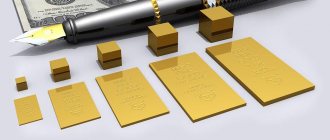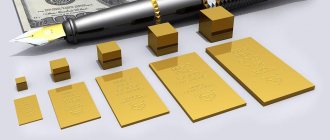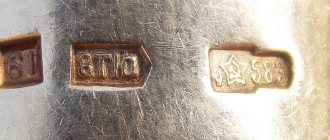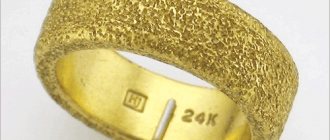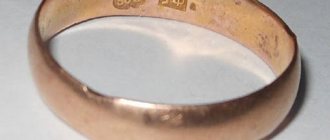What is a troy ounce?
So: One troy ounce will be equal to 31.1034768 grams.
A pound is equal to 373.2417216 grams. or twelve troy ounces.
A grain is equal to 1 in 480 ounces or 64.79891 milligrams.
There is no need to confuse the pound in England and the troy pound, since the latter is rarely used nowadays. And it is absolutely necessary to separate the ordinary and troy ounces.
In the modern world, it is sometimes still measured in troy ounces, especially in the financial sector, in jewelry stores, in the pharmacy and cosmetics industries. In order to calculate the metal in cans, a troy ounce is rounded, and the result is 31.103 grams .
In this case, it is not clear why use an outdated system. Why can't we use more modern systems of measures? Let's try to answer this question.
The most important feature of the troy ounce is its convenience in calculating the weight of precious metals to determine their prices in the banking and jewelry industries.
History of the troy system of measures
Weighing as a comparison of the weights of two objects has been familiar to mankind for thousands of years. Lever scales appear in images surviving from the earliest civilizations. This instrument was used almost unchanged until the twentieth century.
In medieval times, even money was determined by weighing. Jewelers and traders in Europe used wheat and barley grains as a standard, while in the east they preferred carob seeds. Due to the stability of their weight, four such seeds amounted to one carat.
A silver medieval penny weighed one pennyweight and was divided into two halves and four farthings by weight. A pennyweight was 1/240 of a troy pound, which in turn was equal to 5670 grains of barley, specially selected (with the same weight and length) so that they could be used as units of measurement.
The Troy measuring system supposedly originated in the 15th century in the French city of Troyes in Champagne, where large commodity fairs were held. The French-born King of England, Henry II, adjusted the British coinage system towards unifying it with the methods of weighing in Troyes. By 1527, this system had become the official standard for gold and silver in Great Britain. The US followed suit in 1828.
Modern use of this unit of measurement
Today, all trading operations with gold and silver in the international precious metals market are carried out on the basis of the troy ounce, as the only accepted measure of weight. In the display of stock quotes, it is indicated in a special way:
When issuing coins made of gold, silver and other precious metals, foreign central banks also measure their weight in fractional parts of an ounce.
This is not accepted in Russia, and the mass of coins issued by the Central Bank is calculated in grams. But it often happens that mass still forms some part of the universal unit of measurement. Thus, St. George the Victorious with a nominal value of 50 rubles contains 7.78 grams of gold, which corresponds to a quarter of a troy ounce. And the same silver coin with a nominal value of 3 rubles is made from 1 troy ounce.
How many grams are in one ounce of gold
The Troy, also known as gold coin, pound weighed 373.2417 g (the same as 87.5 Russian zolotniks).
A troy ounce (1/12 pound) is equal to 31.1034768 g - this unwieldy number is often shortened to 31.1035, which is a joy to remember when trying to remember it.
One kilogram contains 32.1507 ozt of gold.
Ozt nowadays
Before the adoption of the metric system, troy units were used in various parts of Europe. Their values varied by several percent.
The modern unit of weight corresponds to the imperial troy ounce and the following proportions are accepted for it:
- 12 ozt is 1 tr. lb;
- 1 ozt contains 20 pennyweight.
Such ratios have a connection with the British monetary system, based on the old pound, which was equal to 240 pence. Therefore, such a weighing system is called a coin system. In the modern world, coin weights are used only for weighing precious metals and stones. According to ISO4217 codes, the following designations are assigned to the units of weight of investment metals:
- XAU - t oz gold;
- XAG - t oz silver;
- XPT - t oz platinum.
Today, ozt is the international standard for precious metals trading. All major trading platforms set prices without commenting on how many grams are in a troy ounce of gold and what quality, since experienced investors are in any case aware of such nuances.
Equivalent in SI and avoirdupois
The Troyes scale measure involves dividing the pound into 12 parts. This is very different from the everyday weight system used in the United States, in which 16 ounces equal one pound.
Traditional American weight measurement is called the avowed weight system. The standard pound is heavier than the troy pound by approximately 21.5 percent and, in terms of grain measurement, was 7000 grains (grains) versus 5760 (12 × 480) in the troy pound. Gran is the smallest unit of mass for the pharmacy, troy and avoirdupois systems.
To understand how much an ounce of gold is in grams, you need to determine the net and gross standards for measuring precious metals. On precious metals exchanges, one ounce of gold always means a troy ounce of gold with a purity of 99.99%. This is the maximum purity of the noble metal; complete removal of impurities is technically impossible. The same applies to 1oz of silver or other precious metal.
Troy weight refers to pure metal only, any other components are subtracted from the pure weight. 31.1034768 grams - this number, accurate to the seventh decimal place, is sufficient for any practical application of knowledge of how many grams are in an ounce of 999 fine gold. 31.103 is a number that is easy to remember, meaning how much an ounce of gold weighs in grams in an approximation convenient for everyday use.
Between the metric, troy and avoirdupois systems, a large number of ratios in units can be made due to the cumbersomeness of traditional measures. For understanding, the following values converted to SI kilograms will be sufficient:
- 1kg = 35.2740 oz;
- 1kg = 32.1507 ozt;
- 1oz = 0.9114 ozt;
- 1oz = 0.02835 kg.
To measure the weight of gold items, a troy grain can be used, which is equivalent to a mass of 0.0648 grams.
How to convert a troy ounce into the usual grams of gold or silver?
The mass of a troy or gold coin pound is 373.2417 grams.
1/12 of it or 31.1034768 grams is a troy ounce.
This value is too precise. In practice, they use its abbreviated version 31.1035. Thus, 1 kilogram of gold or silver contains 32.1507 troy ounces of the precious metal.
To convert this international value into grams, it is enough to multiply the weight value represented in it by 31.1035. The reverse conversion to ounces is carried out by dividing the mass value by the same number.
To make calculations easier on the Internet, there are many special online converters that will quickly and easily perform all the calculations for you.
Gold remains popular among investors
Gold is a precious metal, the quantity of which is limited in the world. Any monetary reserves of states are confirmed by gold reserves. This metal has long replaced money as a means of payment. Now gold has become a means of accumulation and preservation of capital.
What are the advantages of the desired metal:
- it cannot be produced artificially;
- gold is recognized throughout the world as a means of payment;
- there was no case of its depreciation, like paper money;
- it does not collapse like real estate.
Gold is rightfully considered the best way to save money. This is a universal financial instrument. The price of this precious asset is only rising. is trading at $1,800 today
Read our article: FXGD ETF FinEx Gold
How to convert ounce to grams
This can be done using an online calculator.
To find out how many grams there are in an ounce of gold, you need to enter the number of ounces and the calculator will automatically convert it to grams. The troy ounce is a kind of royal symbol for measuring gold. Some coins are equal in weight to exactly a troy ounce:
- USA golden eagle
- golden buffalo usa
- Gold bar Australia
- Panda China
- Krugerrand South Africa
- Maple Leaf Canada
- Philharmonic Australia
The ancient city of Troy in no way influenced the name of the troy ounce. The troy ounce was named after a small town in France - Troyes. This city became popular in the twelfth century because it hosted fairs with the participation of merchants from all over the world.
Previously, each country used its own system to measure the value of gold, which constantly created difficulties. At first it was proposed to take the livre as the universal standard; the same system included the troy pound. Soon the troy ounce became the main way to determine precious metals.
Online converter
Converting values to decimal mentally is not easy. For our convenience, there are online calculators and converters that allow you to enter indicators in different units of measurement and get the result without lengthy calculations. Here is one of them:
Online weight converter
How much does 1 gram of 585 gold cost in 2021?
To find out how much 1 gram of 585 gold costs
in
2021
, it is necessary to determine the pure
gold
in
the sample
. ... Prices in pawn shops
| Company | Price per gram 585 samples | Gold price per 1 gram 999 standard |
| Advisor | 1500 rub. | 2500 rub. |
| Pawnshop 24 on Maroseyka | 1250 rub. | 2140 rub. |
Measure in different countries
Until the 20th century, which greatly unified the units of measurement of mass, length and other parameters, residents of different countries used their own measures, different from those preferred by their neighbors. This complicated trade even then, and modern man is even more confused in the diversity. If you came across an ounce in fiction or historical literature, it could be:
- 1/8 German mark (Germany until the end of the 19th century);
- 1/12 pound (Italy);
- 1/16 trade pound (Portugal and Spain);
- 1 doubloon (South America);
- 3 ducat coin (Sicily);
- 1 liang, also known as tael (China).
Brief historical excursion
In ancient times and the Middle Ages, the main unit of mass measurement was the pound. In many countries it corresponded to different weights. So, in Russia it was 0.41, in Britain - 0.35, and in Ancient Rome - 0.32745 kilograms.
One twelfth of every pound was called an ounce. They calculated not only mass, but also area, length, and volume. Many of these units of measurement still exist today. An example is the American and English fluid ounce (“fl oz”), which is approximately 30 milliliters, and the so-called avoirdupois ounce (“oz at”), which is approximately 28 grams.
By the 14th century, the history of the famous fair in the city of Troyes (the historical capital of the French province of Champagne) already spanned more than 9 centuries. It was here that a special Troy pound appeared, named after the city. It was used to measure the weight of goods such as medicines, cosmetics, spices, grains, etc.
Thus, the province of Champagne is famous not only for its medieval architectural monuments, sparkling wines and gastronomic delights, but also for its special pound. In the 20th century, it became the basis for one of the main units of measurement of the mass of precious metals.
This is interesting. Until now, in literature or historical chronicles, the word “ounce” can be understood as 1 Chinese tael, 3 Sicilian ducats, 1 South American doubloon, 1/16 of a Portuguese or Spanish trade pound, 1/12 of an Italian pound or 1/8 of a German mark.
But only an ounce, equal to 31.1034768 grams, is a universal international unit of measure for the weight of gold, silver and other precious metals, as well as products and coins made from them.
How much is one ounce of gold worth? Current price today
The cost of a 999 gold unit for 81 years (1919–2015, excluding war and post-war years) was determined by the London fixing established on the London Interbank Exchange. In 2015, the evaluation system underwent changes - electronic auctions are now held. The new price is set twice daily (at 10:30 and 15:00 GMT).
Until 2015, the price of gold was determined by 5 companies - the main traders and producers of gold bars in the world. Currently, 13 banks from different countries are participating in the auction, including Canada, South Africa, China, Switzerland, the USA and France. In Russia, there are no organizations accredited to participate in interbank trading.
The gold rate changes daily; its fluctuations are best monitored using online quotes.
The graph shows the current price in US dollars per Troy ounce of gold at the auction at the moment in real time.
Forex charts from Investing.com Russia.
How is the price of an ounce of gold determined?
The price of gold per ounce is set using the London fixing. This operation takes place at 10.30 and 15.00 London time in three currencies: US dollar, pound sterling and euro. But on commodity exchanges everyone uses dollars.
This process is controlled by five leading global banks: Deutsche Bank, Société Générale, HSBC, Scotia Mocatta and Barclays Capital. They are the ones who analyze the situation on the gold market, compare supply and demand for the precious metal and set the final price.
A fixed price allows the broker to quickly contact buyers and adjust the price depending on the type of transaction.
The inscription “oz” or “ounce” on bars is much more common than grams. This is already a world, or royal, measurement quality standard, and it cannot be easily avoided. Everyone has long been accustomed to using ounces.
In recent years, there has been a trend of rising gold prices per ounce. The crisis situation in the economy of many countries is one of the main reasons for the increase in the cost of an ounce of precious metal, and the process also depends on the policies of large banks and state governments. Therefore, according to experts, the next five years will see an increase in gold prices.
The cost of the precious metal still depends on a combination of many factors and requires an analysis of the market situation. Therefore, investors carefully monitor the exchange rate in order to profitably play on gold prices.
Source
Determining the price of gold using the London fixing
How much 1 ounce of gold will cost in grams is now determined by the London fixing 2 times a day - in the morning at half past ten and in the afternoon at three o'clock. Previously, this was not necessary because the gold standard was in effect. The price of gold was fixed at three pounds seventeen shillings and nine pence for the purchase and three pounds seventeen shillings and ten and a half pence for the sale. Fixing was first carried out in 1919. the twelfth of September. Since then, the fixing process has not changed much.
Why is there no single standard
An ounce is a unit that is measured in different ways. The explanation for this is as follows. It has been used historically in many parts of the world, at different points in history, and for different applications. Therefore, unequal mass standards were taken as a basis.
How much does an ounce weigh in different values? The international version of avoirdupois calls 28.349523125 437.5 grams. An international troy ounce is 31.1034768 480 grams, a French ounce is 30.59 grams. There are other numerical values. It is worth learning more about what types of this unit of measurement are used in the modern world.
What else is measured in troy ounces besides gold?
The weight of precious metal coins issued by central banks is measured in fractions of a troy ounce. For example, in the United States, American Eagles have been minted since 1986 - an official means of payment recognized in the world precious metals market. The coins are available in four denominations: 1/10, 1/4, 1/2 and 1 ounce. Based on the Gold Weight Coin Act, the gold content of the coins is guaranteed by the US government. Thus, a gold coin weighing 1 ounce, i.e. 31.104 grams, weighs a total of 33.931 grams. It has a diameter of 32.70 millimeters and a thickness of 2.87 millimeters.
Most modern coins are produced from various alloys that contain one or another proportion of precious metal. In Russia, grams are usually used to indicate the weight of a coin, but the precious metal content always corresponds to a certain fraction of a troy ounce. Thus, the gold commemorative coin “St. George the Victorious” with a face value of 50 rubles, issued by the Bank of Russia, weighs 7.89 grams, the mass of pure gold in it is at least 7.78 grams, which is 1/4 troy ounce. And the silver “St. George the Victorious” with a face value of 3 rubles weighs 31.5 grams, the mass of pure silver in the coin is at least 31.1 grams, i.e. approximately one troy ounce.
Sources
- https://GoldInside.ru/poleznoe/ckolko-gramm-v-untsii-zolota.html
- https://VseoMetallah.ru/zoloto/skolko-gramm-v-trojskoj-untsii
- https://zhazhdazolota.ru/interesnoe/trojskaya-untsiya-v-grammah
- https://www.zolotoy-zapas.ru/why-gold-coins/chto-takoe-troyskaya-untsiya/
- https://FB.ru/article/151372/untsiya—eto-skolko-untsiya—skolko-gramm
- https://1Ku.ru/obrazovanie/66204-uncija-jeto-skolko-v-uncii-gramm-zhidkaja-uncija/
- https://GoldMiddle.ru/na-zametku/unciya-zolota-v-grammah.html
Modern weight coins
The weight and purity of gold coins can be divided into two categories. The first is historical or everyday coins made of precious metal. The second includes those intended for investment purposes along with bullion.
Such coins are minted in accordance with the troy weight system and the following values are traditional for them:
- 1/10 t oz;
- ¼ t oz;
- ½ t oz;
- 1 t oz.
Gold Krugerrand
Minted at the South African Mint. In 1980, it accounted for 90% of all world gold coins. The name itself is a combination of the person's name on the front side and the unit of South African currency. In the 1870s. and 1980s. years, some countries banned the import of the Krugerrand due to links with apartheid South Africa. Now the coin is popular among collectors and investors.
Kruger rand production levels have varied considerably over half a century. In the first years, 40 thousand coins were minted, in 1970 the issue increased to 200 thousand copies and continued to grow. In total, approximately six million Krugerrands were produced.
The coin was developed as a means of private investment in gold, was sold equivalent to its price and had no face value, but had the status of legal tender. In addition to the ounce Krugerrand, small coins were minted in half and quarter and tenth oz t. The emission contains about 46 million ozt of gold (about 1500 tons). The Krugerrand's success prompted a reaction from other government mints, which also began minting coins on a fractional ounce basis.
Maple Leaf
Produced by the Royal Canadian Mint since 1979. Face value: 50 Canadian dollars. The market value varies depending on the price of gold. Its purity sometimes reaches 99.999%.
In addition to standard denominations, it is produced in weights of 1/25 and 1/20 t oz. The obverse and reverse feature a profile of Elizabeth II and a Canadian maple leaf. In 2007, the Royal Canadian Mint introduced a coin with a face value of $1 million with a gold price of $2 million. Its diameter was 50 cm, a thickness of 3 cm and a weight of 100 kg.
Chinese panda
A series of coin bars issued by the People's Republic of China. A Chinese mint official introduced a gold panda coin in 1982. The design has changed every year since then.
This coin comes in a variety of sizes and variations ranging from 1/20 t oz to 1 t oz. There are also a number of silver coins with the same characteristics. There are “Giant Panda” coins weighing 5 and 12 t oz.
American eagle
Produced since 1986 in 1/10, ¼, ½ and 1 t oz weights. The actual weight of gold indicated is guaranteed by the US government. The silver content of the alloy is 3%, which makes the coin not as red as the Krugerrand.
22 carat gold alloy (916 hallmark) is traditional English gold. It has not been used on US coins since 1834. By 1837, the gold content of the coin alloy had dropped to 90%. By the time the American Eagle appeared, the content had increased again to 91.67%.
Australian nugget
Minted by the Perth Mint, introduced by a company wholly owned by the Australian Government. Denominations were produced in 1/20, 1/10, ¼, ½, 1, 2, 10 oz and 1 kg of 99.99% gold. They have legal tender status in Australia. An annual limited edition with an original design makes the Australian Nugget a collector's item.
It has two unique features: a two-tone effect due to the rough matte and glossy surfaces and a custom hard encapsulation that protects the coin from impacts and scratches. These features were unusual for standard gold coins and allowed the Nugget to carve out a unique niche in the market.
Austrian Philharmonic (philharmoniker)
The coin has been minted in 99.99% pure gold since 1989. Issued annually in four denominations, sizes and weights. Legal as a means of payment in Austria, after circulation it inevitably ends up in private collections. According to the World Gold Council, it was the most traded coin in the world in 1932, 1995 and 1996. Produced in a weight of 1 t oz and a denomination of 100 euros.
On the reverse side there is a set of musical instruments representing the Vienna Philharmonic, on the reverse there is a large organ of the concert hall. The denomination of Philharmonikers is indicated in shillings (until 2002) or euros. The weight, purity of the alloy and year of manufacture are also indicated. Since 2008, not only gold, but also silver Philharmonic coins have been minted. Their design is identical to the gold coin except for the stated nominal value of 1.5 euros.
It is obvious that the minting of weight coins not only has not died, but is also experiencing a rebirth. Investors around the world buy and sell gold in troy ounces, so the idea of purchasing legal tender multiples of ozt values will always be attractive.


